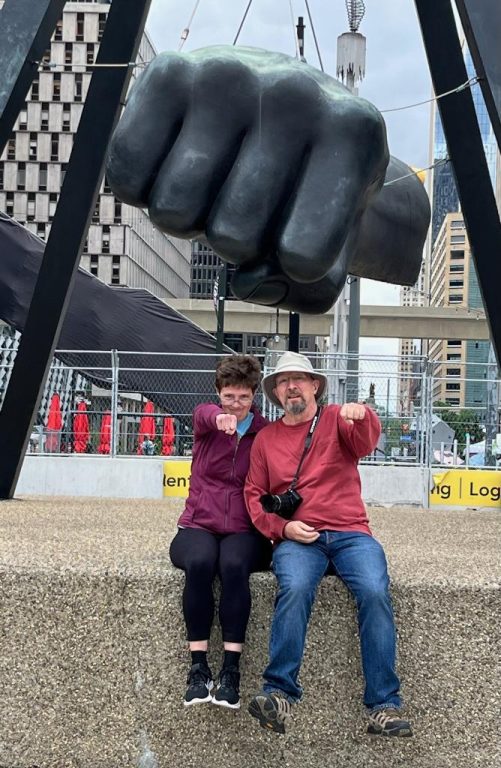After a lovely breakfast that Randy fixed for us, we took off for our extended tour of Detroit. I tried to take some notes along the way, but I am sure these will not be complete. We saw so much!
Our first stop was the Heidelberg Project, a hard-to-describe art installation by an artist called Tyree Guiton, in one of the neighborhoods of Detroit that has not been rehabilitated, but is still full of blighted and condemned homes. It consisted of several painted homes and sculptures made from the discarded debris of consumer culture–broken TVs, shopping carts, toys, cars, etc. etc. Some of it very thought-provoking!
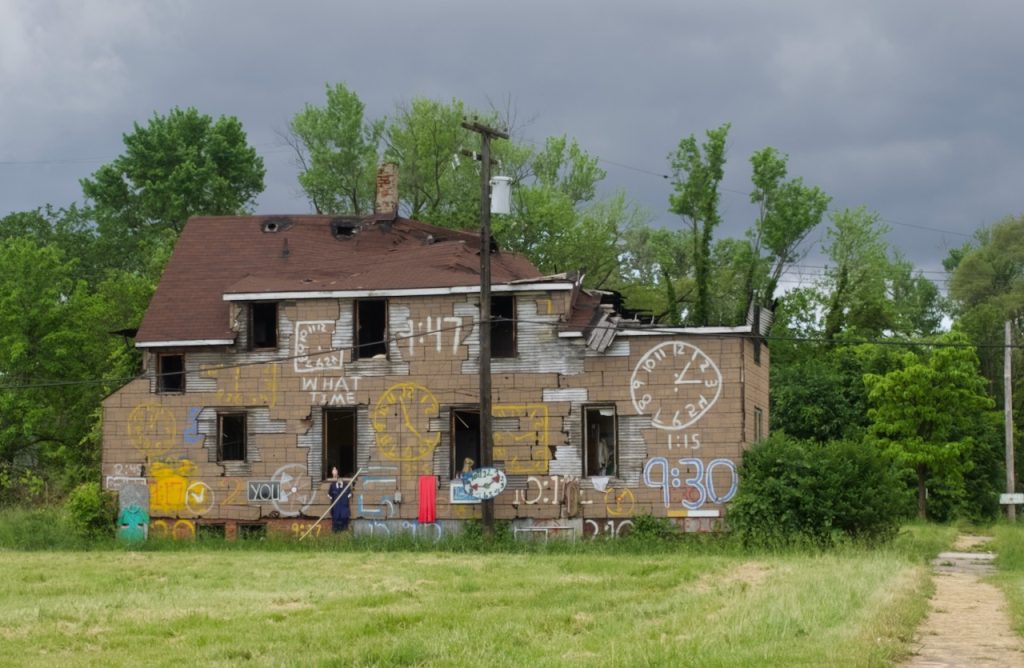
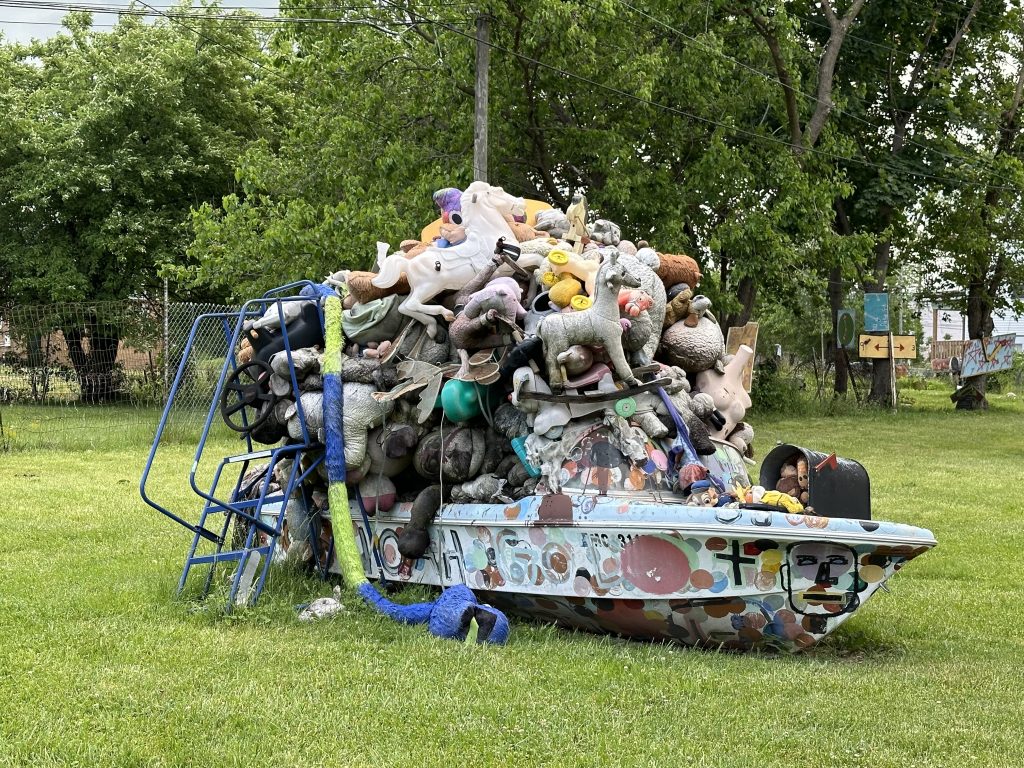
Then we went to Belle Isle, an island in the Detroit river, now a state park and recently rehabbed. From here, we could see the Detroit skyline (and Windsor on the Canadian side), and also the lake Randy and Angye called “not a Great, but a Good” lake, Lake St. Clair.
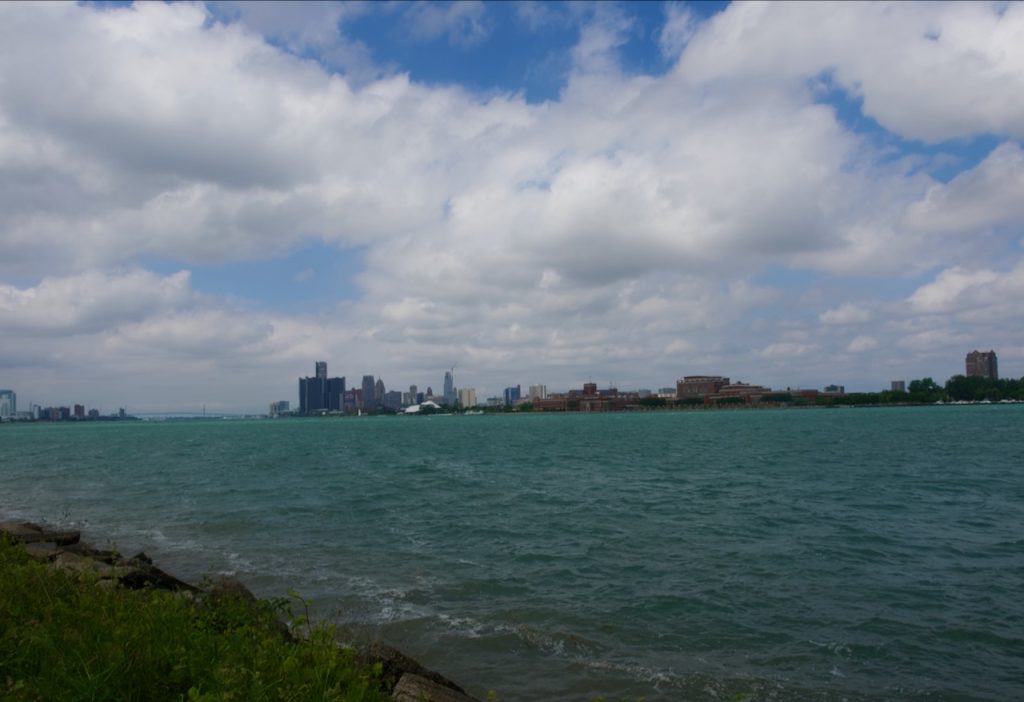
We drove from there through a mix of very ritzy neighborhoods (like Indian Village) and extremely blighted ones. We are getting a better understanding of Detroit, its economic history and the effect that racism in housing policies, white flight on a massive scale, and especially the riot of 1967 had on the city, but it is hard to do that in just a couple of days with little background. We learned a lot of new things! And the neighborhoods are really vastly different.
For example, we stopped by the Ossian Sweet House, a home purchased in 1925 by a Black physician in a then all-white, mostly working-class neighborhood, who was threatened by white neighbors and defended his house, which resulted in a shootout and a subsequent trial, in which Clarence Darrow was hired by the NAACP to defend Sweet and the other men that had helped him when his home was under attack. That particular house is in ok shape (an educational plaza is in the planning stages), but the surrounding neighborhood is now very dilapidated and that was pretty shocking to see. Even as Randy and Angye pointed out how much some of these areas with decaying, boarded-up, abandoned, burned out, and half-collapsed houses have already improved (many houses have now been torn down and for now have just become green spaces), for an outsider unfamiliar with how much worse this used to be, it is still hard to take in. Especially since right after that, for contrast, we went to “the Pointes”–a series of wealthy incorporated villages right outside of Detroit along the lake front, with mansion after mansion along the river. In one of these, we managed to find lunch in a brewery (which I christened the “Church of Beer,” and clearly a site of miracles because nearly everything was closed for Memorial Day, but we found pretzel bites, salad, and mac and cheese to sustain us!
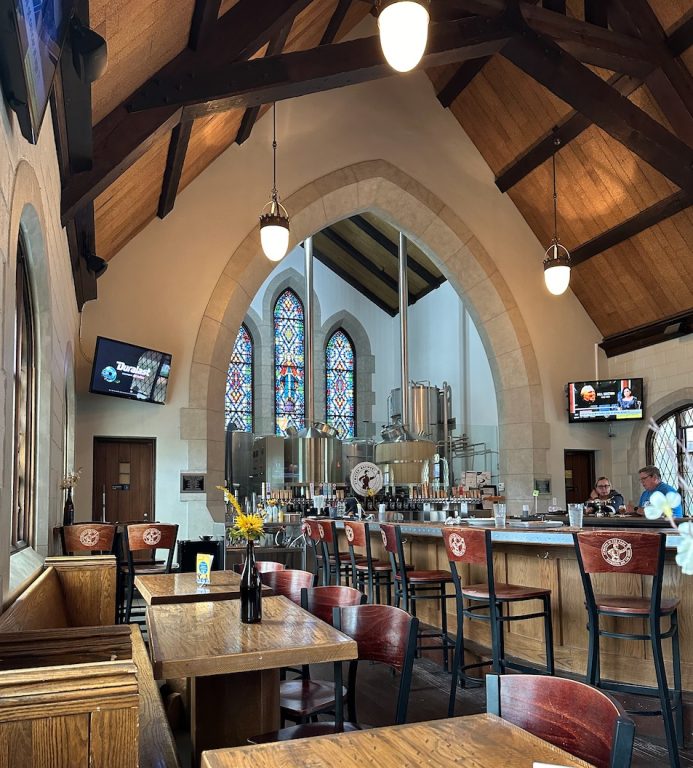
Within Detroit’s city limits, Indian Village and the former mayoral mansion right are also proof that some very ritzy neighborhood also maintained their wealth when all the rest of the city went down the tubes toward the famous bankruptcy of the city in 2013 at the end of decades of neglect. But then there is also the now quite impressively revitalized downtown, which was our last stop for the afternoon. Here, we went into the lobby of the stunning late-art deco Guardian Building (the “Church of Finance”) and into the very mundane office building where the Detroit Free Press‘s offices currently are. This was very cool, even as it was quiet (Memorial Day, and most of its journalists now work from home most of the time). Randy works for the Free Press, a paper that looks back proudly on nearly 200 years of publication and has won a bunch of Pulitzers (and Emmys for their documentaries), and understandably takes great pride in the paper. Lots of conversations about the importance of journalism!
Also downtown, we saw the famous Spirit of Detroit sculpture and the more recent Fist (homage to Joe Louis, Detroit’s feistiness, and apparently a classic photo op; see below). We also took the People Mover, which is an elevated loop which (sadly) never got connected to the a larger public transportation network. That was fun, but downtown as a whole was a little disorienting, though because there were so many parts that were cordoned off–a music festival called Movement was underway in one part, and many streets are barricaded already for next weekend’s Grand Prix that goes right through downtown. But it was a good time, and also hard to believe that many of the buildings that look busy, spiffed-up and full of ritzy stores were actually standing empty and dilapidated ten years ago, before the full-on rehabilitation of downtown happened.
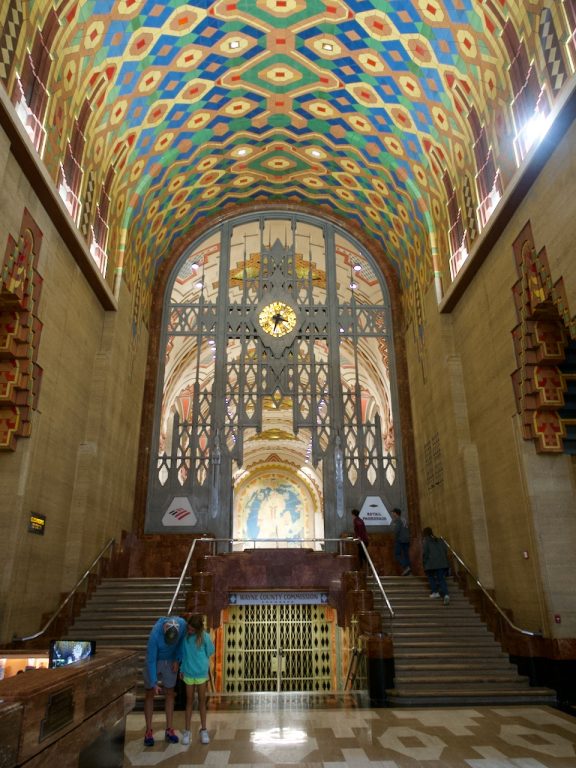
We went home briefly to rest a little bit, and Mark and I went for another walk around the lovely neighborhood. For dinner, we headed to a wonderful pizza place downtown, but went home pretty much right afterward, and just chatted at home a little more before we called it a night. A very busy day! I am attaching a map of the overall area, but without markers for our various destinations, so you have to find them yourself. The blue pin is where we are staying!

